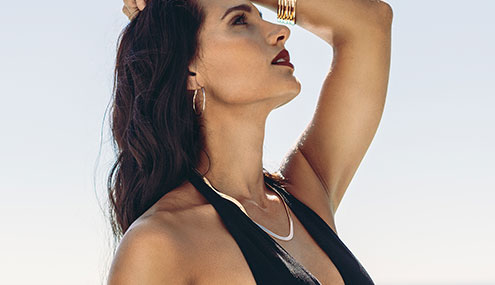Women with unusually large breasts experience numerous problems on a daily basis. Large breasts cause problems such as neck ache, shoulder and back pain, trouble finding comfortable clothing, issues with activities such as sports, poor posture, rashes beneath the breasts, and self-consciousness in a variety of situations.
When these problems are becoming too much to deal with, we often recommend a procedure known as breast reduction surgery, or reduction mammaplasty.
During the Consultation
As part of a breast reduction consultation, your plastic surgeon or consultant will need to know your medical history. Your family’s medical history will also be important. Share your medical history in detail and also discuss why you are opting for breast reduction surgery. The consultant will need to know about smoking habits or any particular medicine that you may be taking.
This information will be vital when deciding whether or not you are a suitable candidate for the surgery, as it will help determine your likelihood of surgical complications.
Your plastic surgeon will measure your breasts and may take photographs. There will be a discussion on how much tissue and fat needs to be removed in order to get the desired breast size. A mammogram or examination of the breasts may be done.
Not only will you receive enough information and guidance to help you prepare for the surgery, you will also be helped in planning your post-surgical recovery.
About the Procedure
In a breast reduction surgery, the patient is first given general anesthesia. Then the plastic surgeon makes an incision. All the extra fat, glandular breast tissue, and skin will be removed. Drainage tubes will be used to remove the excess fluid. The areolae are repositioned as needed and the incisions are stitched up.
After Your Breast Reduction
At the end of the procedure, special gauze is wrapped around the breasts, and you will wear a post-surgical bra for comfortable support during the healing process. After a time, you will be able to switch to a sports bra or other supportive bra that does not have underwire.
Tiredness and breast pain are common temporary side effects of the surgery. Oral painkillers are prescribed to help lessen any pain and discomfort. In case of any concern, always talk to your doctor. Fever will be the first sign of an infection.
You will need to go to your plastic surgeon for regular checkups during the healing process. At these follow-up appointments, your stitches and bandages will be removed. Physical activities will have to be stopped for some time. You will also need to take some time off from your work. Heavy lifting should be avoided at all costs.
Benefits
You will feel a lot more comfortable after the surgery. Back and neck pains, body posture problems, and any physical discomfort will go away. The physical appearance of your breasts will have changed. Breathing problems, if any, will also get better. Confidence and self-esteem may also improve, as will quality of life.
Schedule a Consultation
Board-certified plastic surgeon Dr. Carl Lentz has a great deal of experience when it comes to making breasts lighter using breast reduction surgery. Contact our office if you would like to schedule a helpful consultation.






